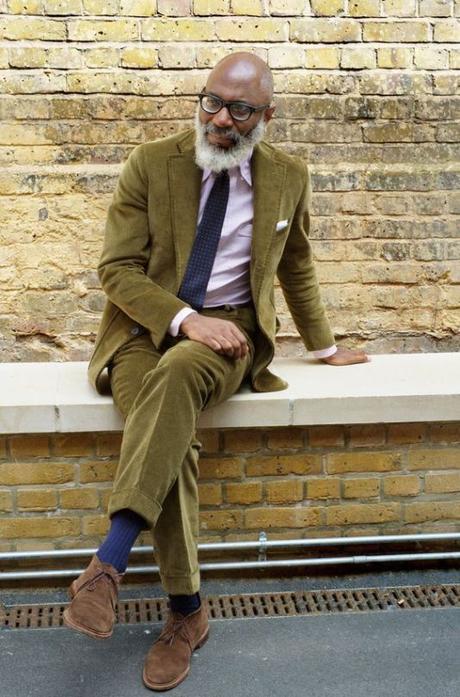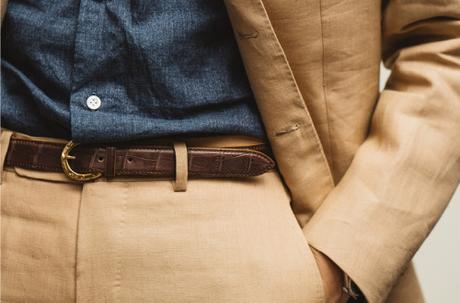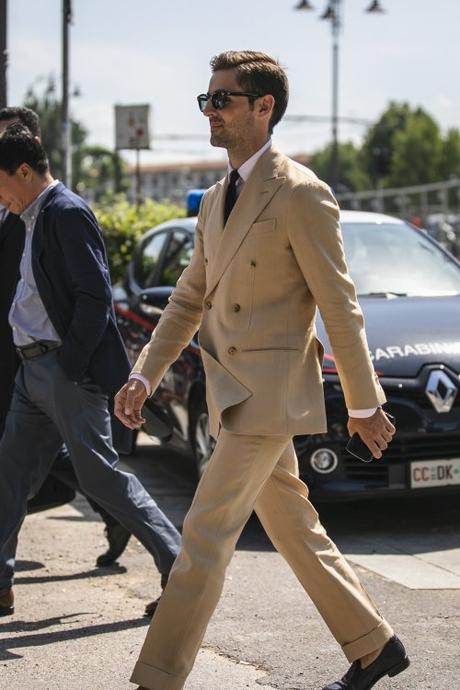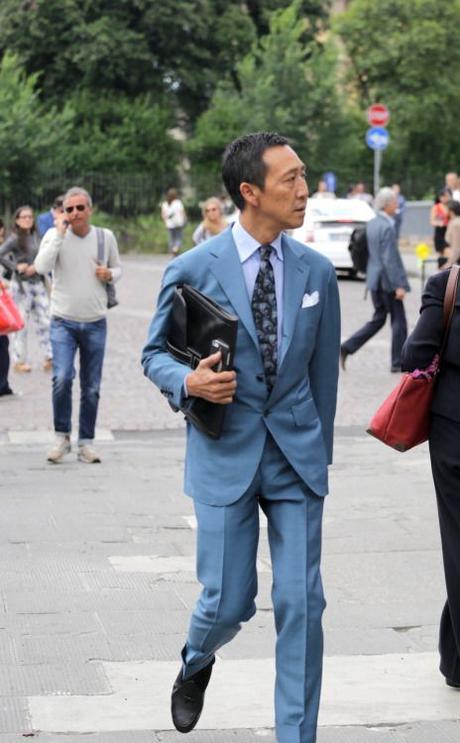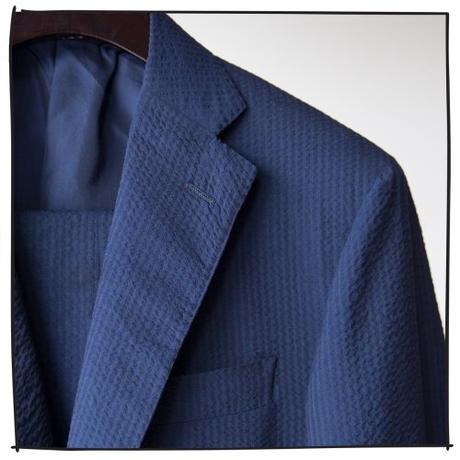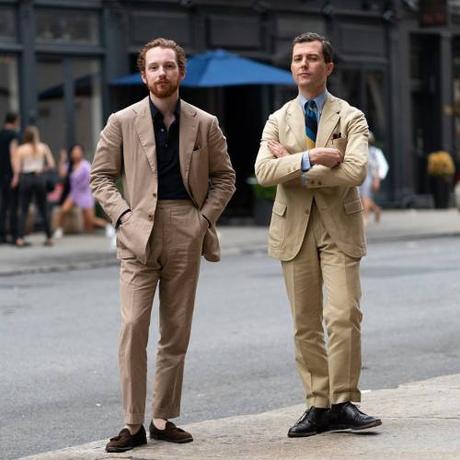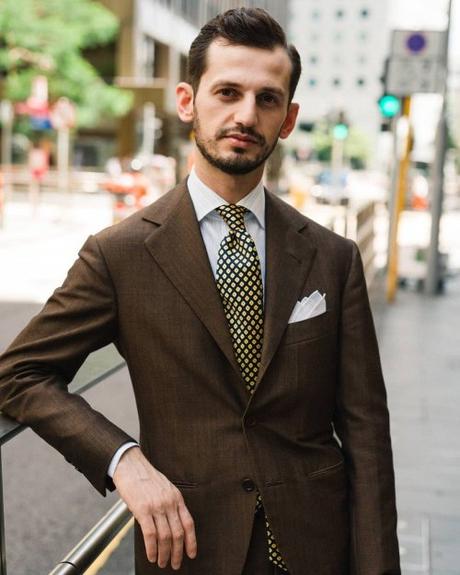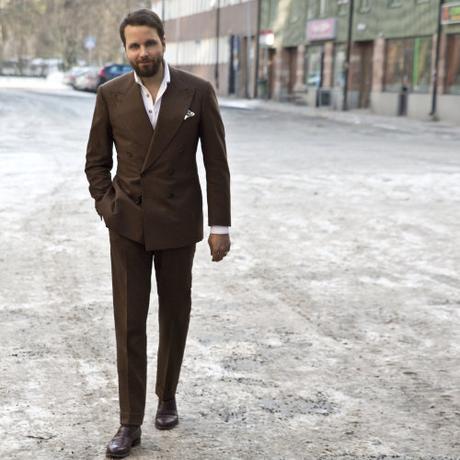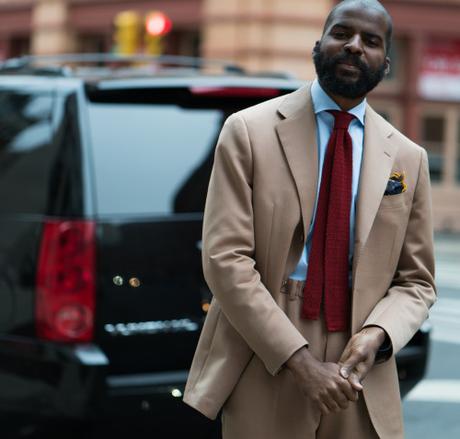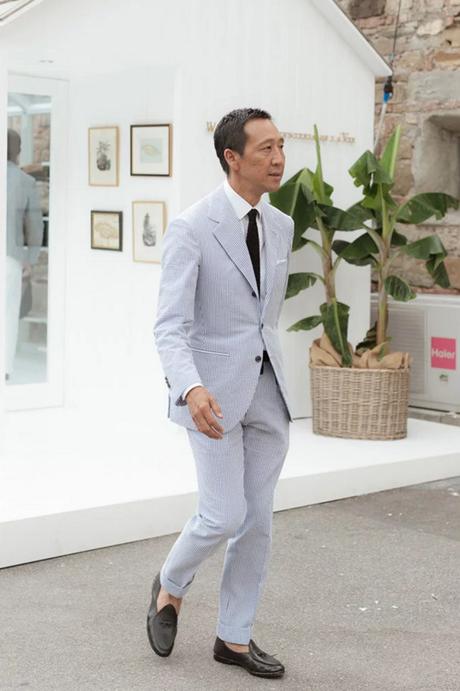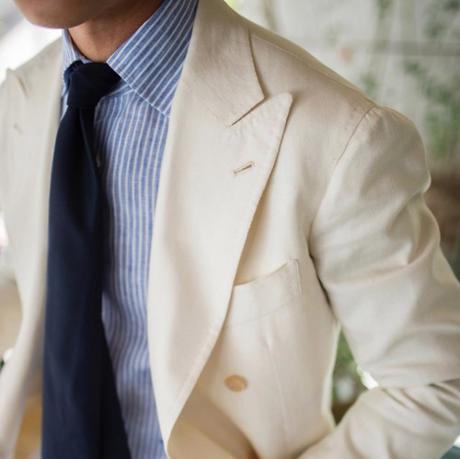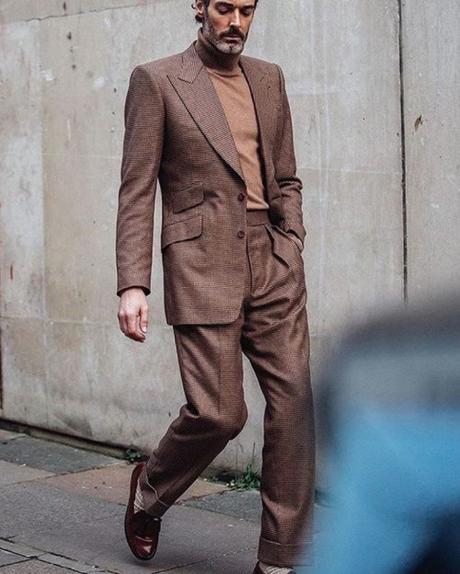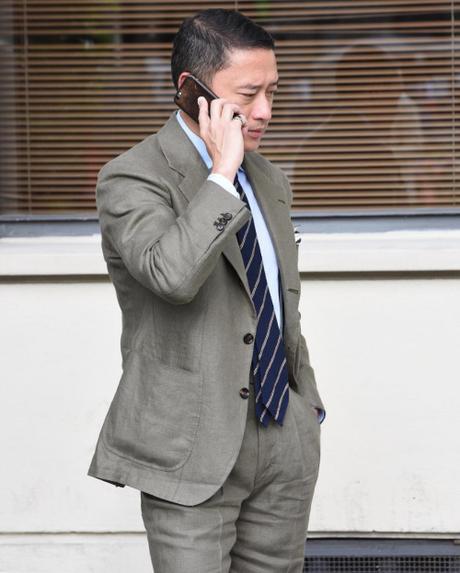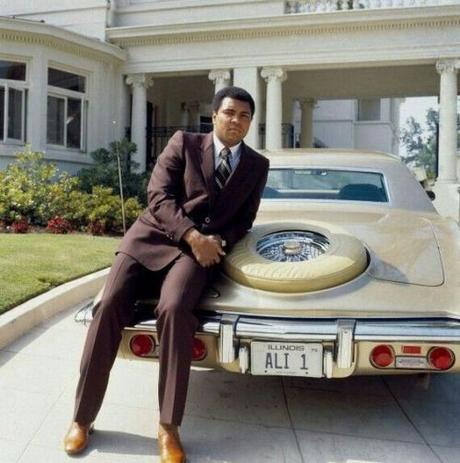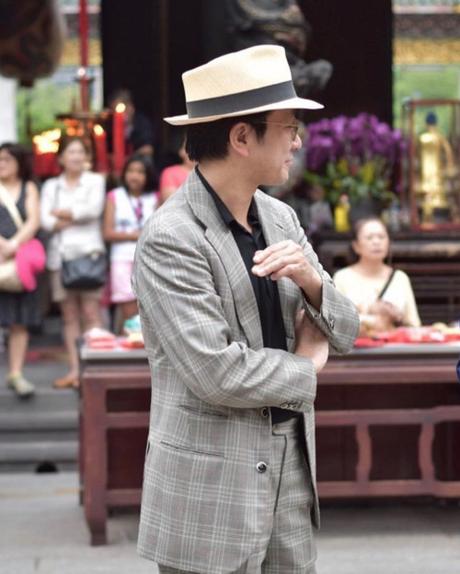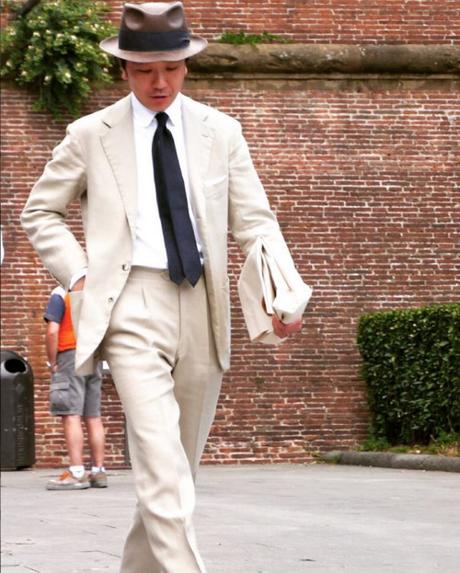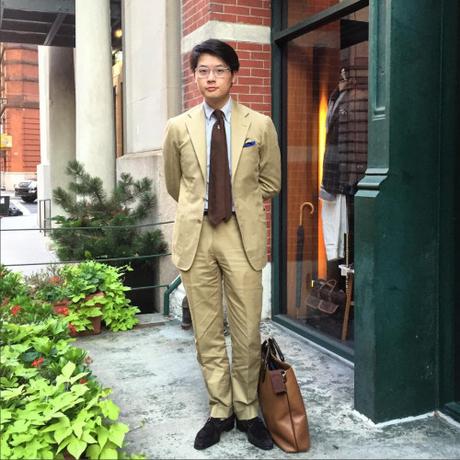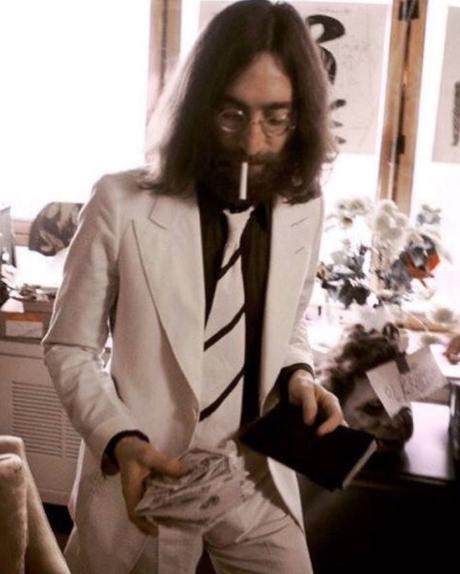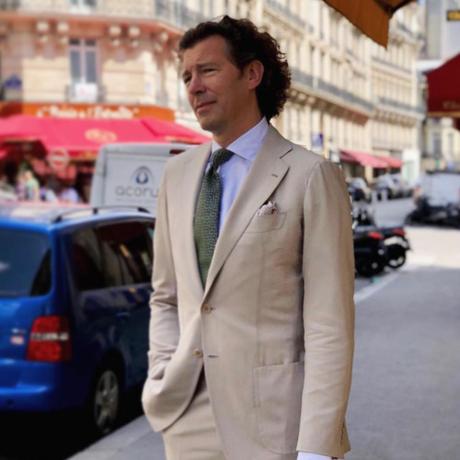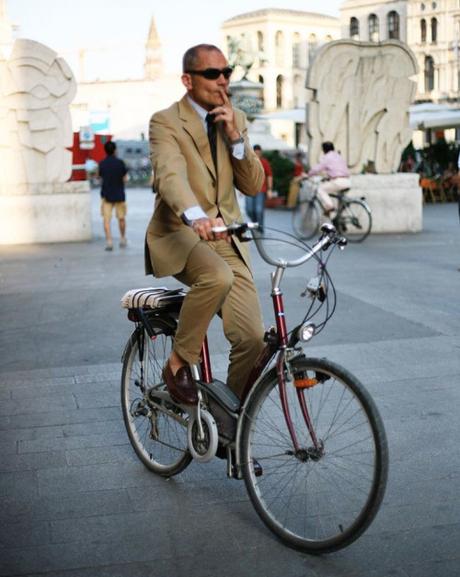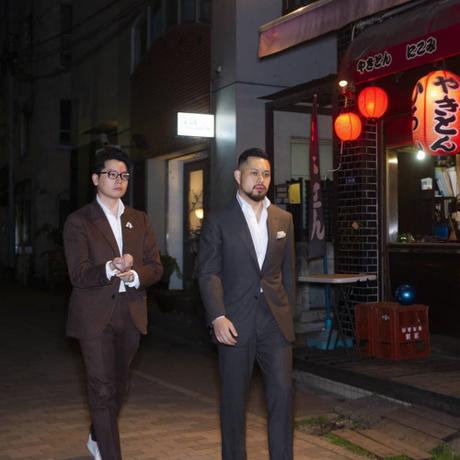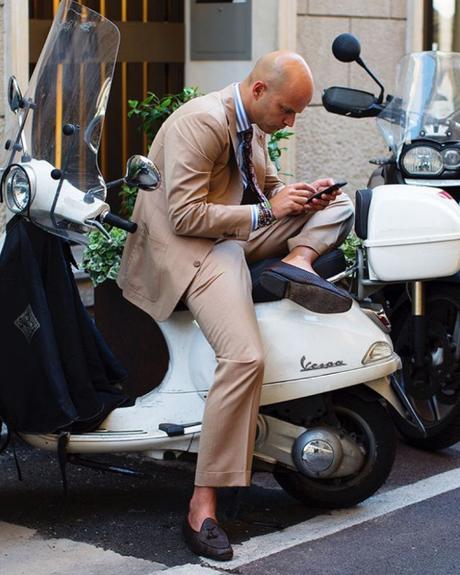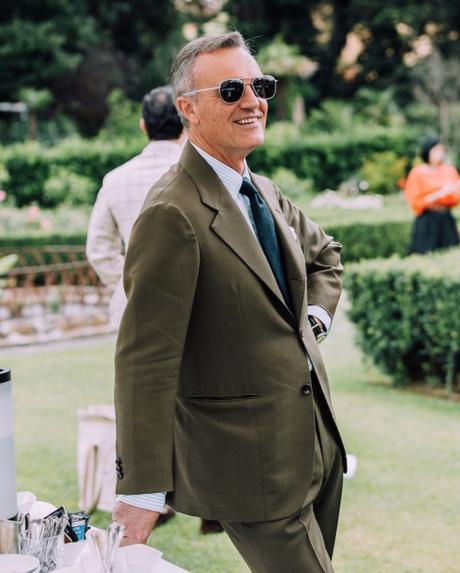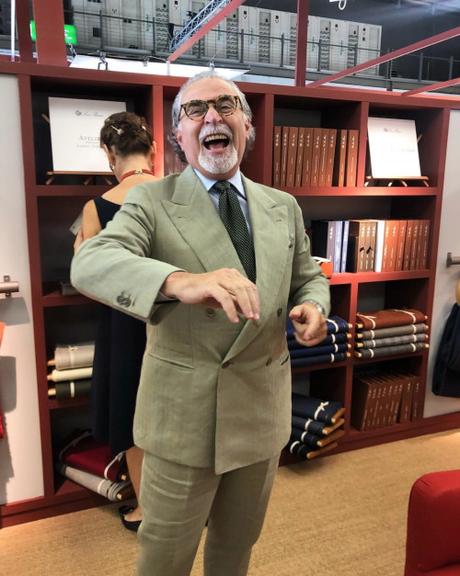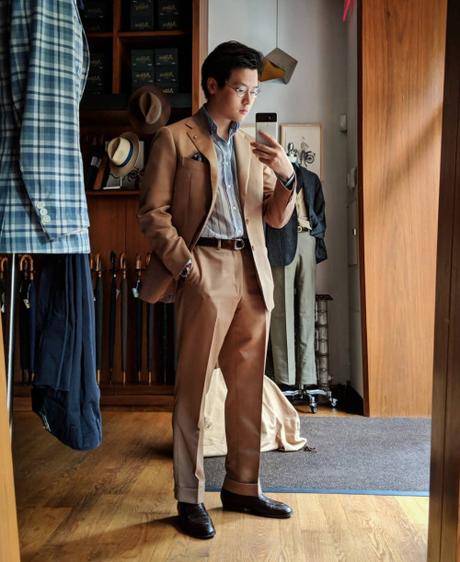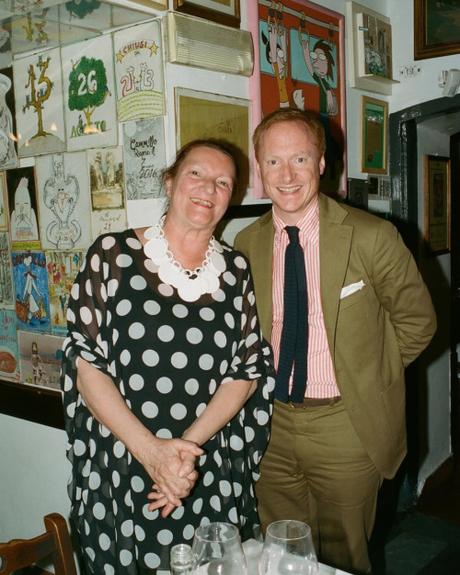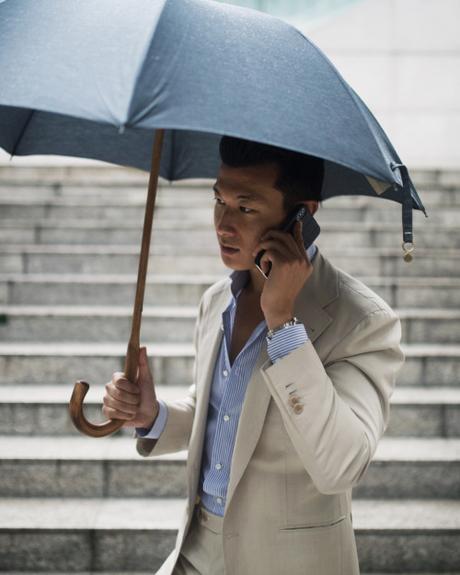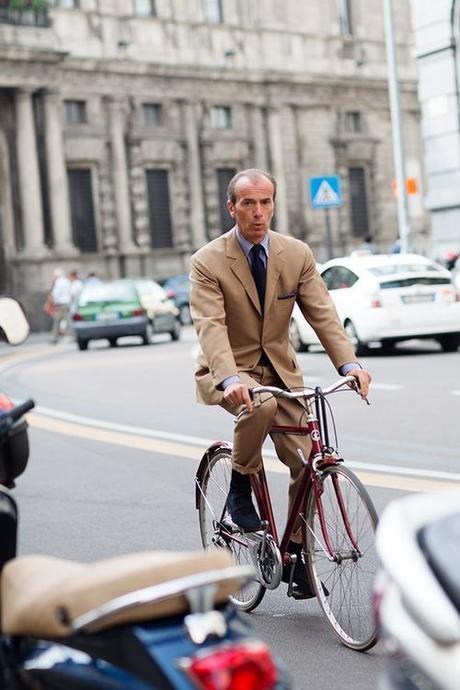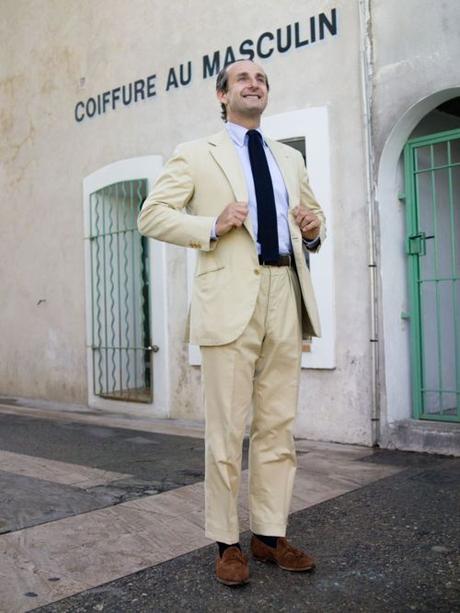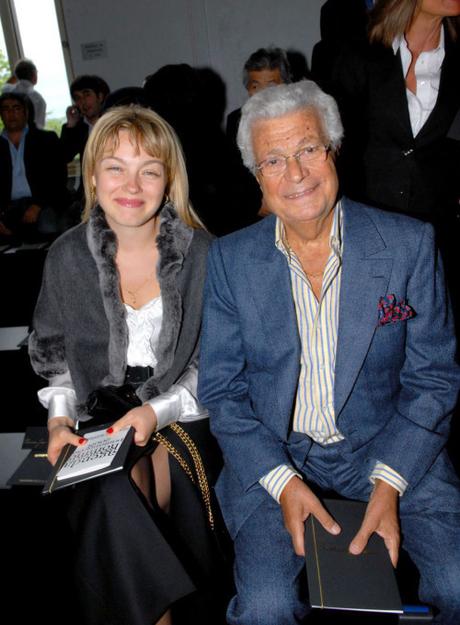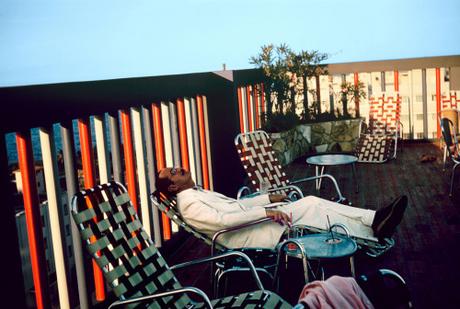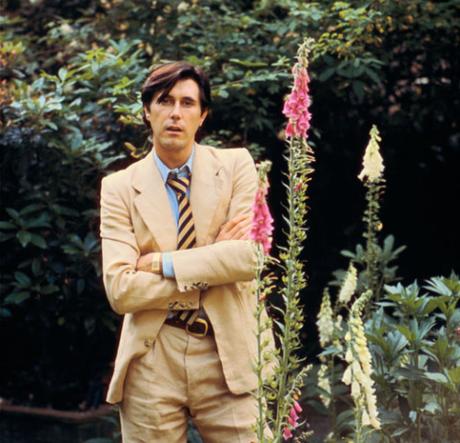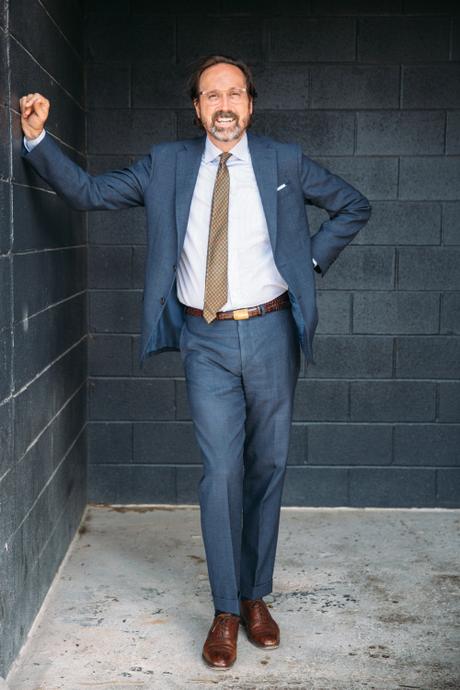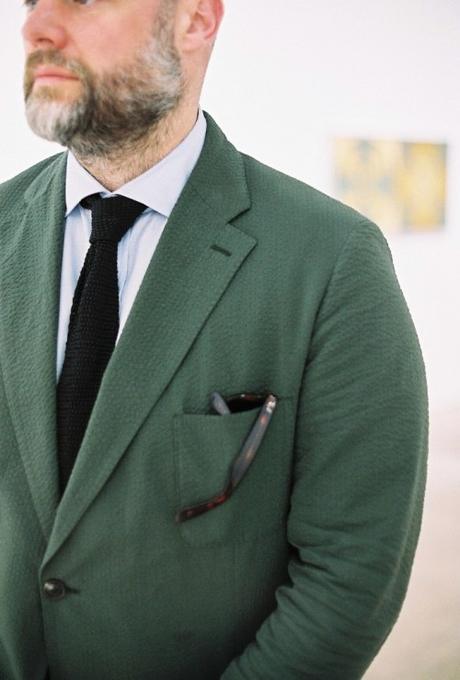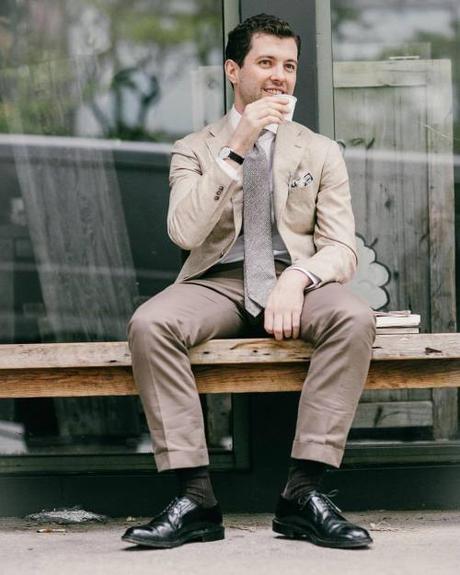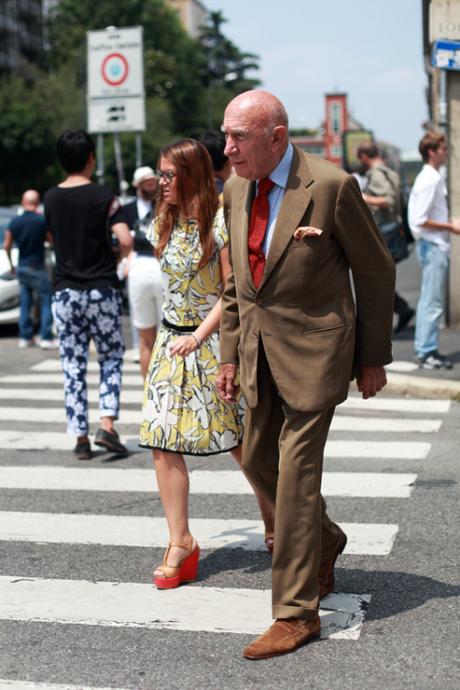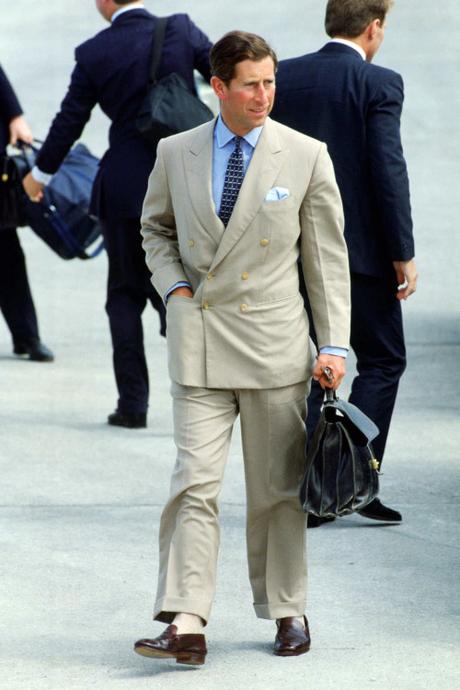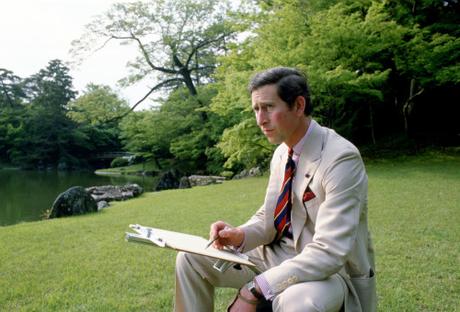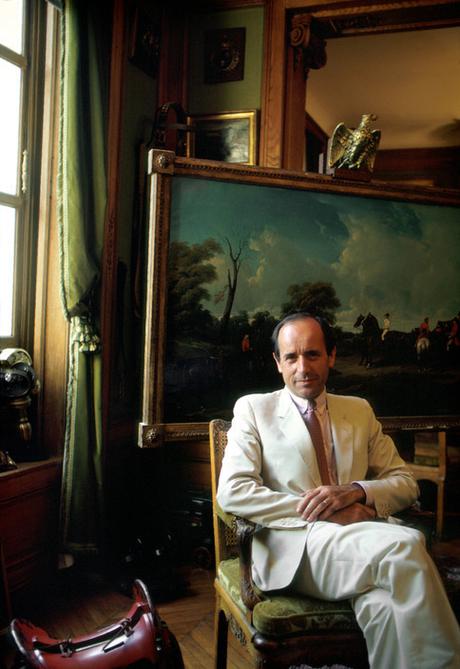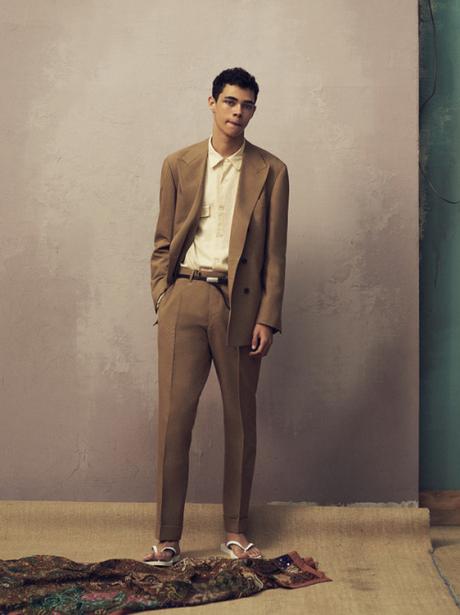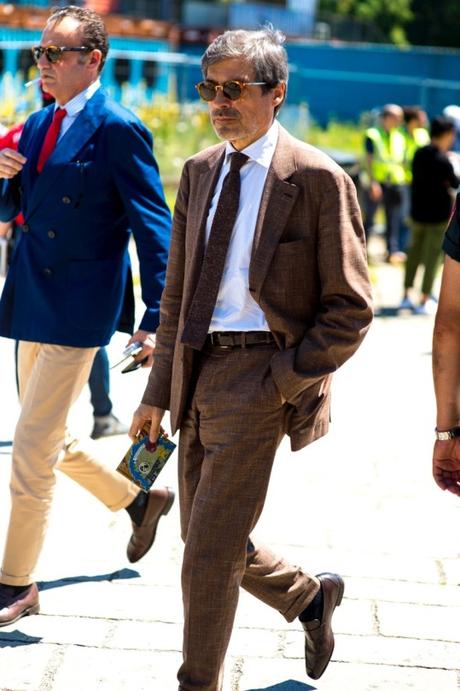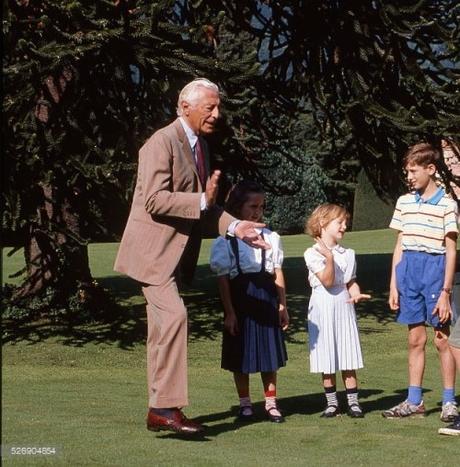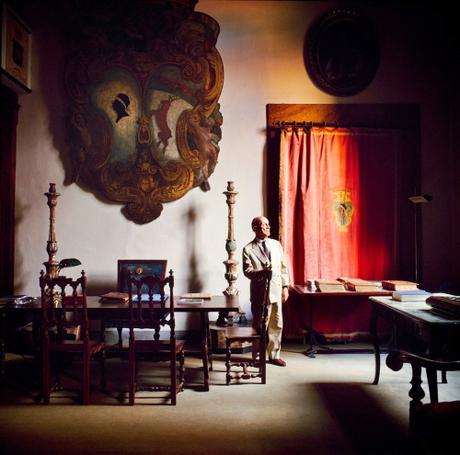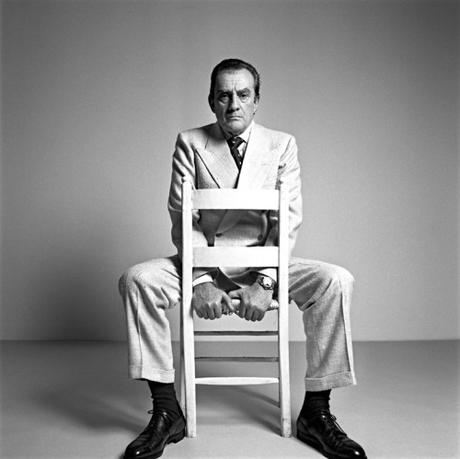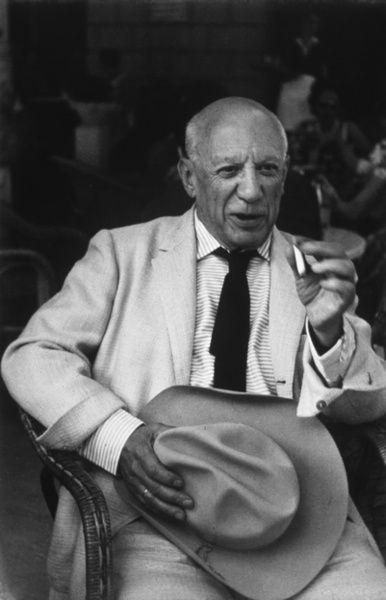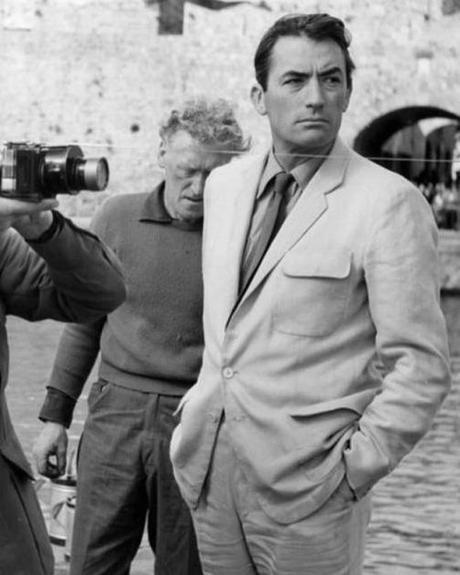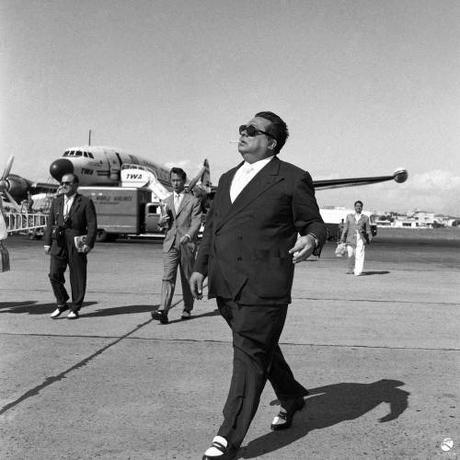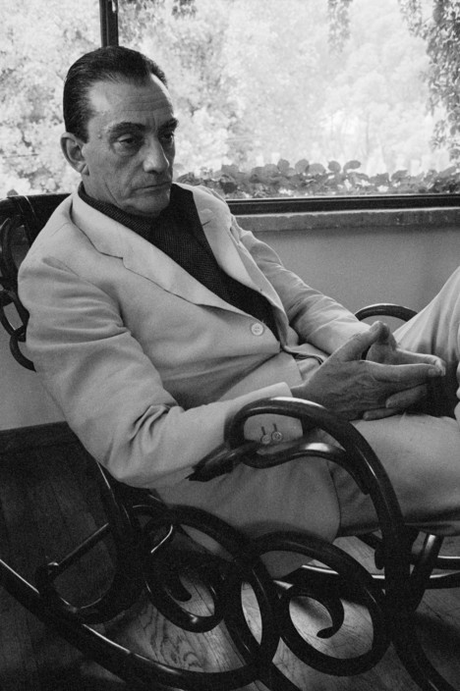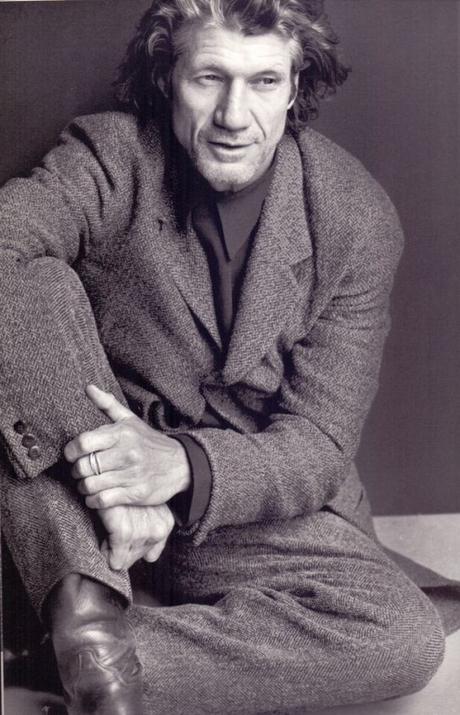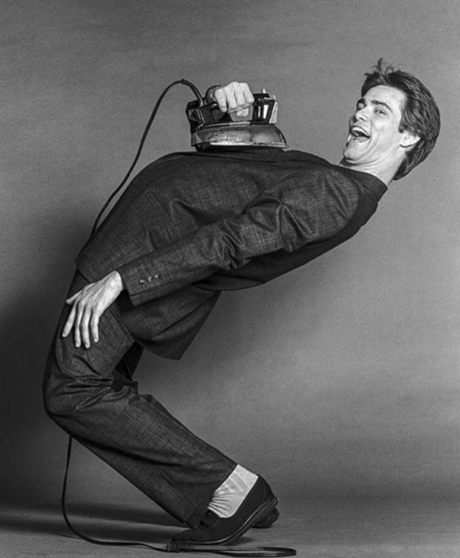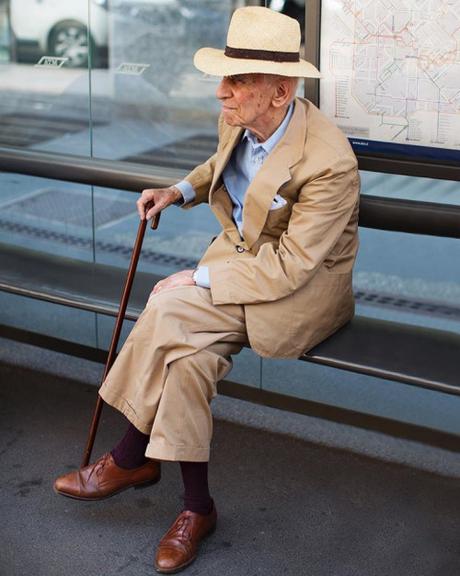
For men who love tailored clothing, it’s a continual challenge to dress well without standing out. Hard dress codes have largely broken down in all but the most formal of environments, which ostensibly means people can wear whatever they want. But in place of those hard dress codes are now soft dress norms, which still regulate people’s behavior. It seems like the most common question is how someone can wear a tailored jacket when everyone else is in t-shirts and jeans.
The easy and formulaic answer is to rely more on sport coats than suits, and dress things down where you can. That means wearing open necked shirts, softer jackets, and textured or patterned fabrics. It also helps to wear slightly more casual shoes, such as pebble grained chukkas or suede penny loafers, rather than dressier calfskin oxfords. You’ll still look a bit dressed up, but at least you won’t look like you’re heading into a Monday board meeting.
The other approach, which is the one I’ve embraced more as I’ve gotten older, is to simply not care. A poster at Reddit’s Female Fashion Advice recently had this to say about wearing nice clothes:
My yoga teacher once told me that, when he was younger, his mother was very conscious of the things she wore – everything had a time and place. Even the china set. She would never bring them out unless it was for a special dinner. But, when he was 14, his mom got cancer and was close to passing away. She recovered, thankfully, but he distinctly remembers the day she embraced the idea of FUCK IT. She put on her most beautiful dress and busted out the china. And they ate meatloaf on a regular Tuesday.
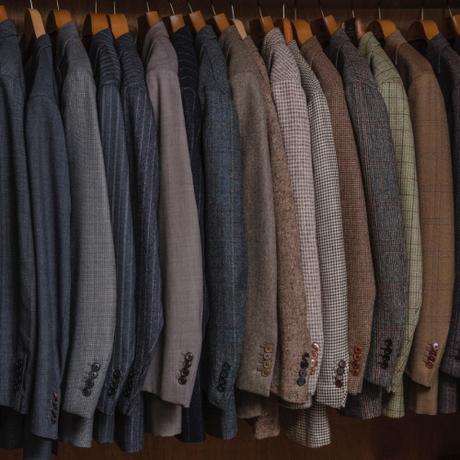
At that point, he realized that she started to live. Like really live. So he always wears whatever he wants, whenever he wants. Since he told me that story, I’ve sort of adopted that. I used to try to dress like everyone else. At my niece’s birthday, I wore shorts and a nice top. This year, I plan on wearing a beautiful dress because, fuck it, I wanna do it. I will be the best looking motherfucker at that damn pool party anyone has ever seen!
Granted, there’s something to be said about paying deference to social norms. You wouldn’t wear a suit to a BBQ, to state the obvious. And, for reasons I can’t explain, it’s easier to wear tailored clothing as you get older – easier still if you live in a socially liberal city. But I also think men overestimate the consequences of standing out a little. For better or worse, most people will judge you on your character, not your clothes.
Which is good reason to wear what I think of as “happy suits” – slightly more casual suits you wear to ballets, symphonies, museums, nice bars, or evening events. Or, frankly, whenever you feel happy. Suits don’t have to be somber and serious, they can also be cheerful and celebratory. Nothing is easier to coordinate; nothing flatters the body more. The best sport coat and trouser combination is still overshadowed by a good two-piece.
There’s an entire world of suitings beyond your basic navy and charcoal worsteds. The key is to pick a cloth that sits just below the standards of business dress. A color such as dark brown, tan, or Air Force Blue can be good. Or a pattern such as houndstooth or overlaid checks. Here’s my guide to some of the easier fabric options for happy suits, from cottons to Thornproof tweeds. To quote my friend Pete, “dare to look rad.”
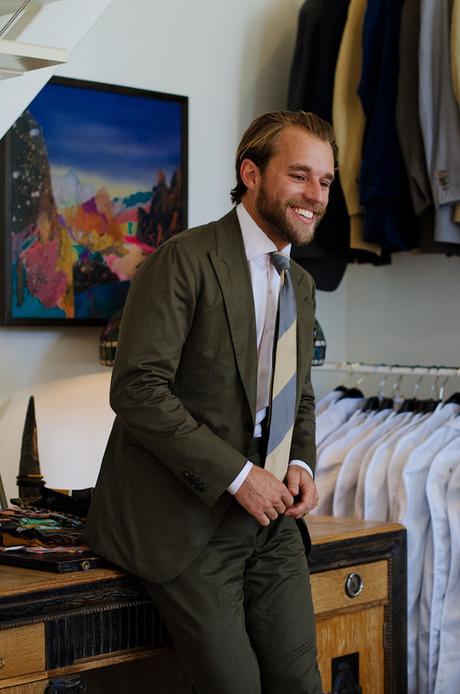
Linen or Cotton: Nothing really needs to be said about linen or cotton suits, except that they’re some of the easier ones to wear (I like them in tan and olive). They’re a little more casual than wool suits of any variety. Although, since the fibers don’t have the crimp that’s natural in animal hair, they also don’t have the same spring-back quality. That means they take wrinkles a little easier (linen, especially so), and can feel a bit stiff when you put your hands in your pockets. That said, I’m reminded of this quote from Michael Hill of Drake’s, when I asked him what he wears most:
I love cotton suits for all the reason why people hate them. They’re stiff, they crumple, the color fades. I can picture my cotton suit sitting on the end of my rail at home now. The way the sleeves curl, it looks like my arms are in them, and the sleeves will probably stay like that even after the jacket has been cleaned. If you get one in a heavy drill cotton, the fabric almost moulds to your body. That’s the wonderful thing about cotton suits. They’re casual and age with you, much like a good pair of jeans.
The best thing about a linen or cotton suit is that you can easily break the pieces up into separates, which gives you a bit more flexibility in your wardrobe. My recommendation is to get them in slightly heavier fabrics. Heavier linens and cottons will rumple more than they wrinkle, which makes them look more carefree than messy after a long day’s wear.

Seersucker: Seersucker suits are an American classic, but they carry some baggage. A few years ago, as a joke, Missouri state senator Ryan McKenna added something to the end of an education bill that would ban people from wearing them. His ad-hoc, handwritten amendment read: “Any person living in this state aged 8 and under may wear a seersucker suit at their leisure. Any person over the age of 8 living in this state may not wear a seersucker suit because adults look ridiculous in seersucker suits.”
The amendment was later withdrawn (it was never intended to be serious), but the fact remains that seersucker today conjures up old time-y ideas of Southern gentility. Men chomping on fat cigars and cucumber sandwiches, swilling their mint juleps while attending lawn parties. It’s an association that appeals to certain people for the same reasons it repels others.
Blue-and-white seersucker can be great if you’re into a certain traditional look, but if you want to modernize it, try something like a gray-and-white or tonal blue. I’ve been on the hunt for a dark-blue-on-navy one forever. The Armoury has one from Ring Jacket, which is made from a wool-silk blend. A little nicer than pure cotton, I think, since dark colored cottons can sometimes fade in patchy and uneven ways.
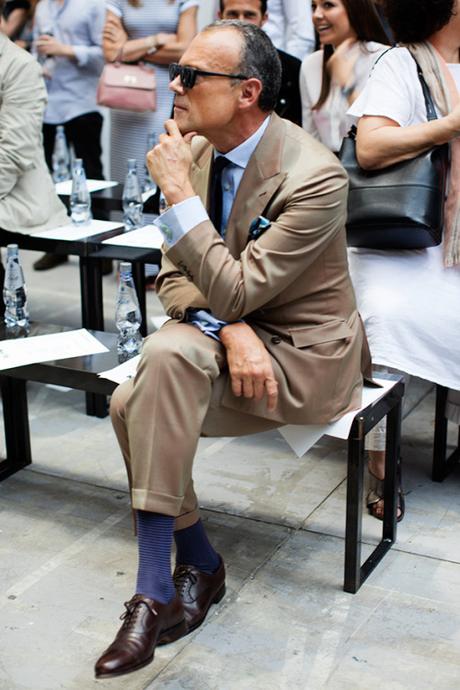
Solaro: Solaro has a bit of a strange history. In the early 20th century, English colonizers wrestled with the question of why they were more likely to get tropical diseases than Africans. They came up with the strange theory that it had something to do with skin color. Darker skin, they supposed, was better at blocking out the sun’s rays, which somehow affected the growth and spread of microbes. An Italian-English physician named Louis Sambon published some research on this, but seeing an opportunity for profit, also came up with a way to weave beige warp yarns and brighter red weft yarns together in order to mimic the effect of darker skin. The idea was that the outwardly facing, tan yarns would keep the wearer feeling cooler since they reflected the sun, while the inwardly facing, red yarns would confer positive health effects.
Of course, Solaro doesn’t give any health benefits. And thankfully, the cloth today is more closely associated with Italian style than English colonialism. Men such as Gianni Agnelli and Matteo Marzotto have worn Solaro cloth as summer suits. Its beige, herringbone weave is made distinctive through its slightly glimmering red cast. The weavers proved one thing right – Solaro wears cool, which means it’s well suited for summer, even if it’ll do nothing for tropical diseases.

Corduroy: The odd thing about corduroy is that it’s one of the most romanticized fabrics, but also the least sexy. Once used for workwear – even at times being standard issue for US military trousers – modern references conjure up images of frumpy humanities professors wearing thin-wired frames while sifting through dusty archives. Or perhaps the bookstore clerk who wears jumbo wales with bad leather shoes.
Corduroy’s redeeming quality, however, is that it references all that is good, particularly where it sits in the canon of classic American style. Like oxford cloth button downs, it symbolizes casualness, education, dependability, and trustworthiness. Costume designers often use the fabric in films to subtly signal a character’s virtues. Robert Redford, for example, famously wore a wheat colored corduroy jacket in his role as Watergate reporter Bob Woodward in All the President’s Men. The idea was that the honest, no-frills jacket was an outward manifestation of Woodward’s personality.
Unlike wool, however, comfort in corduroy has to be earned. Zegna makes a cashmere-cotton cord, and some ready-to-wear brands have stretch-infused formulations, but most corduroys you’ll find are woven from pure cotton. Much like denim, corduroy doesn’t have any give. It’s stiff and slightly uncomfortable – at least until you break it in. I was a little skeptical of my corduroy suit from Steed at first, but after a few dozen wears, it’s become one of my favorite garments. Like with cotton and linen suits, a corduroy suit can be easily broken into separates. A corduroy jacket pairs well with flannel, denim and cavalry twill; the trousers do well against sweaters and work coats.

Thornproof Tweed: Prickly in texture and earthy in color, tweed is the fabric of fall and winter, but not all tweeds can be used for suits. Harris Tweeds, for example, are typically too spongey and loosely woven to be made into trousers. Donegal can sometimes work, but the material can be a bit busy and daring.
If you’re looking for a tweed suit, start with Thornproof. It’s heavy, hard worsted tweed that’s so densely woven, it’s resistant to being torn or snagged by thorns (hence the name). Traditionally, English sportsmen used Thornproof tweeds for their hunting and shooting clothes. Today, however, you can find it in a range of autumn and winter coats and suits. The dense weave, while resistant to thorns, is also weatherproofed for rain and wind, which makes it comfortable in cold and wet conditions.
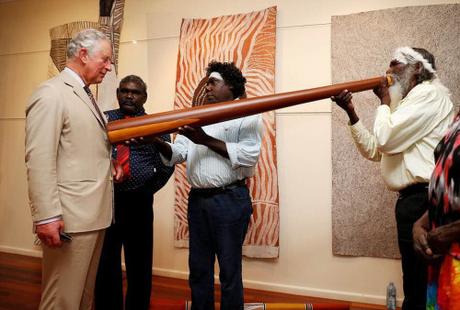
Gabardine: Wool gabardine is a tightly woven twill. From any more than a few inches away, you can barely make out the ribs, which is why it appears like a solid plain weave from a distance. It’s a wonderful, workhorse fabric from a time when men used to wear tailoring much more often. Gabardine drapes like nothing else, stretches where you need, and has a wonderful, almost silky hand.
It does, however, have two limitations. First, it’s a shoulder season cloth, which means it helps you stay cool in the spring and warm in the fall. As a lightweight twill, however, it’s neither breathable nor heavy enough for summer or winter wear. Secondly, even in casual colors such as tan or olive, the fabric is too silky and smooth for suit separates. Old issues of Apparel Arts sometimes showed men wearing tan gabardine sport coats with gray flannel trousers in the 1930s, but I think the combination looks odd today. Colin Heywood, Managing Director at Anderson & Sheppard, tells me some of his clients use the fabric for brass button blazers, but it’s rare. That said, wool gabardine trousers are wonderful on their own – especially in the warmer months – which is a reason enough to get two pairs if you’re buying a suit.
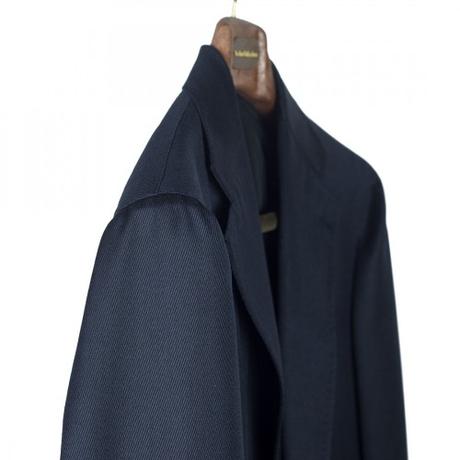
Heavier Wool Twills: Finally, there are heavier ribbed wools, such as covert cloth, serge, whipcord, and cavalry twill. These are usually reserved for trousers, odd jackets, and sometimes even outerwear. Covert, for example, takes its name from its intended usage – clothes to be worn in covert (pronounced “cover”), where hunters pursue their game. Traditionally, finer fabrics risked getting snagged and ribboned by brambles and stray branches, hence why sportsmen favored covert cloth for their outermost layer.
That said, these fabrics can also be used for city suits. No Man Walks Alone, a sponsor on this site, has a beautifully tailored, navy covert cloth suit from Sartoria Formosa. The Armoury has a taupe one from Ring Jacket. And Simon at Permanent Style recently wrote about a handsome tan suit he commissioned from Sartoria Pasinato, which was made from cavalry twill. A friend notes that cavalry twill has a reputation for getting shiny in heavily worn areas, which is why you traditionally find them in lighter colors.
The upside to heavier wool twills is that they’re sturdier and less silky than gabardine. And consequently, they’re little more wrinkle resistant. They also have a matte, slightly ribbed texture that makes them a touch more casual than your traditional dark worsteds. These have all the cold weather charm and practicality of tweed suits, but are a little easier to wear to a downtown restaurant.


